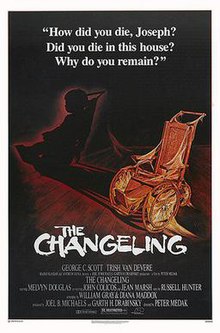
The Haunted Mansion is a 2003 American supernatural horror comedy film directed by Rob Minkoff and written by David Berenbaum. Loosely based on Walt Disney's theme park attraction of the same name, the film stars Eddie Murphy as a realtor who, along with his family, becomes trapped in the titular building. Terence Stamp, Wallace Shawn, Marsha Thomason and Jennifer Tilly appear in supporting roles.

Scary Movie 2 is a 2001 American supernatural parody film directed by Keenen Ivory Wayans. It is the sequel to Scary Movie and the second film in the Scary Movie film series. The film stars Anna Faris, Regina Hall, Shawn Wayans and Marlon Wayans, as well as Tim Curry, Tori Spelling, Chris Elliott, Chris Masterson, Kathleen Robertson, David Cross and James Woods. The film is the last in the series to feature the involvement of stars Marlon and Shawn Wayans, and director Keenan. Marlon would eventually go on to produce a similar horror-themed parody, A Haunted House, and its sequel, both starring himself. In the latter film, Wayans pokes fun at the Scary Movie series' decline in quality after his family's departure.

The Haunting is a 1963 British horror film directed and produced by Robert Wise, adapted by Nelson Gidding from Shirley Jackson's 1959 novel The Haunting of Hill House. It stars Julie Harris, Claire Bloom, Richard Johnson, and Russ Tamblyn. The film depicts the experiences of a small group of people invited by a paranormal investigator to investigate a purportedly haunted house.
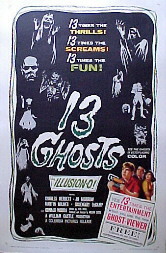
13 Ghosts is a 1960 American supernatural horror film produced and directed by William Castle, written by Robb White and starring Rosemary DeCamp, Margaret Hamilton, Charles Herbert, Martin Milner, Jo Morrow, John van Dreelen, and Donald Woods.
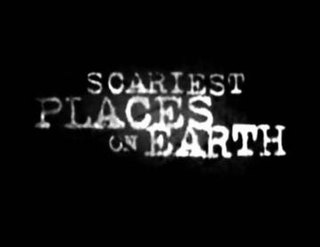
Scariest Places on Earth is an American paranormal reality television series that originally aired from October 23, 2000, to October 29, 2006, on Fox Family, and later ABC Family. The show was hosted by Linda Blair, with narration by Zelda Rubinstein. The show featured reported cases of the paranormal by detailing the location's history, and then sending an ordinary family to visit the location in a reality TV-style vigil.

The Grudge 2 is a 2006 American supernatural horror film directed by Takashi Shimizu and written by Stephen Susco. The film is a sequel to The Grudge (2004) and the second installment in the American The Grudge film series. The film stars Arielle Kebbel, Amber Tamblyn, Jennifer Beals, Edison Chen, Sarah Roemer, and Sarah Michelle Gellar who reprises her role from the first film. Like its predecessor, the film features a plot that is told through a nonlinear sequence of events and includes several intersecting subplots. It follows Karen's younger sister Aubrey coming to Japan after finding out about Doug's death, a schoolgirl named Allison being haunted by the ghosts of the Saeki family after entering the house with two of her classmates, and a young boy named Jake whose apartment building is haunted by the ghosts.
Gerald "Jerry" Neal Williamson was an American horror writer and editor known under the name J. N. Williamson. Born in Indianapolis, Indiana he graduated from Shortridge High School. He studied journalism at Butler University. He published his first novel in 1979 and went on to publish more than 40 novels and 150 short stories. In 2003 he received a lifetime achievement award from the Horror Writers of America. He edited the critically acclaimed How to Write Tales of Horror, Fantasy & Science Fiction (1987) which covered the themes of such writing and cited the works of such writers as Robert Bloch, Lee Prosser, Richard Matheson, Ray Bradbury, H. P. Lovecraft, August Derleth, William F. Nolan, and Stephen King. Many important writers in the genre contributed to the book. Williamson edited the popular anthology series, Masques. Some of his novels include The Ritual (1979), Playmates (1982), Noonspell (1991), The Haunt (1999), among others.

Trish Van Devere is a retired American actress. She was nominated for a Golden Globe Award for the film One Is a Lonely Number (1972), and won a Genie Award for the film The Changeling (1980). She is the widow of actor George C. Scott, with whom she appeared in multiple films.
Péter Medák is a Hungarian-British film and television director.

The Amityville Horror is a 1979 American supernatural horror film directed by Stuart Rosenberg, and starring James Brolin, Margot Kidder, and Rod Steiger. The film follows a young couple who purchase a home haunted by combative supernatural forces. It is based on Jay Anson's 1977 book of the same name, which documented the alleged paranormal experiences of the Lutz family who briefly resided in the Amityville, New York home where Ronald DeFeo Jr. committed the mass murder of his family in 1974. It is the first entry in the long-running Amityville Horror film series, and was remade in 2005.
Korean horror films have been around since the early years of Korean cinema, however, it was not until the late 1990s that the genre began to experience a renewal. Many of the Korean horror films tend to focus on the suffering and the anguish of characters rather than focus on the explicit "blood and guts" aspect of horror. Korean horror features many of the same motifs, themes, and imagery as Japanese horror.
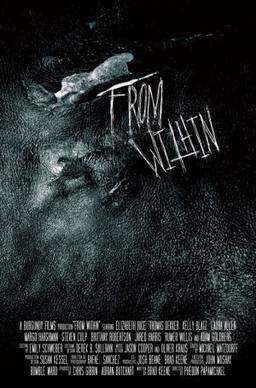
From Within is a horror film directed by Phedon Papamichael Jr. and written by Brad Keene. Filming took place in Maryland in fall 2007. The film premiered at the Tribeca Film Festival in April–May 2008.
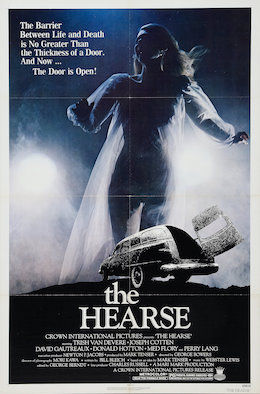
The Hearse is a 1980 American supernatural horror film directed by George Bowers and starring Trish Van Devere and Joseph Cotten. It follows a schoolteacher from San Francisco who relocates to a small town in northern California to spend the summer in a house she inherited from her deceased aunt, only to uncover her aunt's past as a devil worshipper, which seems to trigger a series of supernatural occurrences.

Ghost Adventures is an American paranormal and reality television series that premiered on October 17, 2008, on the Travel Channel before moving to Discovery+ in 2021. An independent film of the same name originally aired on the Sci-Fi Channel on July 25, 2007. The program follows ghost hunters Zak Bagans, Aaron Goodwin, Billy Tolley, and Jay Wasley as they investigate locations that are reported to be haunted.
Indian ghost movies are popular not just in India but in the Middle East, Africa, South East Asia and other parts of the world. Generally the movies are based on the experiences of modern people who are unexpectedly exposed to ghosts. Some Indian ghost movies, such as the comedy horror film Chandramukhi, have been great hits, dubbed into several languages. They usually draw on traditional Indian literature or folklore, but in some cases are remakes of Western movies, such as Anjaane, based on Alejandro Amenábar's ghost story The Others.

Tab Murphy is an American screenwriter, film producer, and film director.
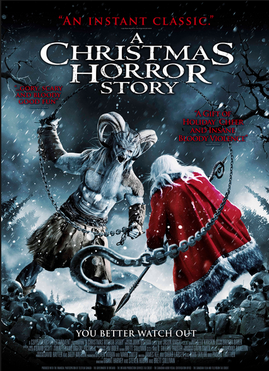
A Christmas Horror Story is a 2015 Canadian anthology horror film directed by Grant Harvey, Steven Hoban, and Brett Sullivan. It premiered on July 20, 2015, at the Fantasia International Film Festival and had a limited theatrical release on October 2, 2015, along with a VOD release. The film is a series of interwoven stories tied together by a framework story featuring William Shatner as a radio DJ.

Cry for the Strangers is a 1982 American made-for-television horror film based on the book of the same name by John Saul. It was directed by Peter Medak and stars Patrick Duffy. It was originally broadcast on CBS on December 11, 1982.
